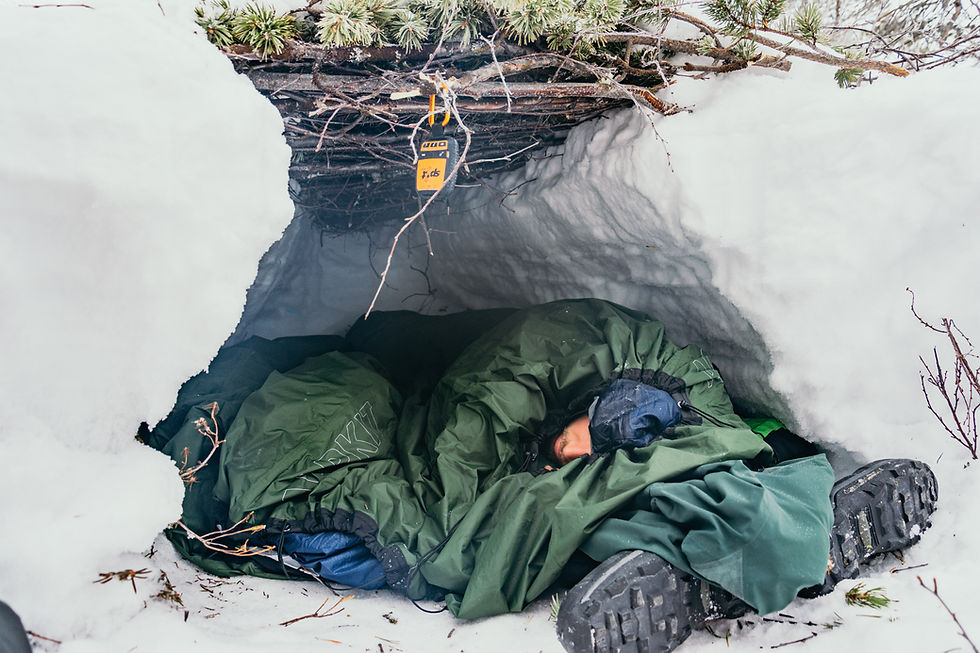How to buy a backpack
- Oct 3, 2021
- 4 min read
Updated: Mar 29, 2022
The backpack is the icon of adventurous travelling, whether you are going out for a day hike in the forest or you travel for 3 months through Asia.
When going out to the store to buy a backpack, you need to consider the activity, the environment you will be walking and the volume that you'll be carrying.
This page is built up in 4 sections that will help you in your quest for the ideal backpack.
Which type of backpack will fit?
What about the different designs?
Is there a quality difference?
Structure of the backpack

Which type of backpack will fit?
Most manufacturers develop packs in a range of designs and size. This, to accommodate a variety of body types, match different activities and environmental conditions.
Day packs (12L - 30L)
All weight will be supported by the shoulder straps. These packs are great for short one-day trips. A waist belt can help to keep the load centered when moving around, and shoulder padding will increase the comfort.
Alpine packs (30L - 40L)
In these packs, you will already find an internal structure that helps divide the weight by carrying the load partially on the hips.
These are excellent companions for equipment intense activities like tour skiing or climbing.
Backpacking packs (45L - 70L)
The internal rigid frame gives structure to the whole backpack and divides the weight of the load on your shoulders, hips and your back. These are used for multi day trips (3 to 14 days).
Easy access pockets and loops on the outside are a way to make these bags extra handy.
Expedition packs (70L - 100L)
These are the larger versions of the backpacking packs. And they are huge! They should not be used for an occasional camping trip, as the backpack itself already weighs around 3,5 kilograms.
Using one of these is only really justified if you're going out for a month in the wilderness or walk yourself to the top of a snowy mountain.
What about the different designs?
- Top loading packs: They have a strong design that fits well on your back. The downside is that you'll need to unload everything if you need an item that's placed in the bottom of your back. It's therefore really important to think ahead what items you'll place in what spot.
- Front loading packs: These packs have lots of zippers and divided compartments. This seems handy, but keep in mind that this weakens the structure of the pack and the zippers are really weak points in the design. Get one that has compression straps that can take the pressure off the zippers.
Is there a quality difference?
Yes there is... If you find yourself in a rough environment, your pack will scratch against rocks, trees, branches,... Different brands have different designs, but not every manufacturer is using the same qualitative materials. You need a durable fabric that can take lots of impacts.
Durable fabrics mostly have a "rip stop feature." Meaning that they can't rip open for more than 1cm. If a tree branch rips your pack open, it won't be destroyed and can be temporarily fixed with some duct tape.
Have a look at the seams, they should be covered by fabric to support the strength.
Check for extra stitches at stress points like the shoulder straps, compression straps and hip belt. They will prevent early aging of your backpack.
Weather resistant coatings around the zipper can keep snow and sand outside. For rain protection, you will need to have a rain cover, which is a standard feature in most backpacks.
Check your zipper! Here you can easily spot a quality difference if you compare brands. Zippers should be sturdy and have double stitching.
Structure of the backpack:
Larger packs should be designed in a way that they divide the weight evenly through a sophisticated suspension system.
The shoulder straps should carry 30 to 40 percent of the weight. The straps will help to keep the pack in balance in order to have a good weight transfer to the hips. The hip support is designed to carry the majority of the weight.
Better brands have different shoulder strap designs for men and woman. Make sure that you pay attention to this when you fit your backpack.
The sternum strap in the front should be moveable in order to have the correct comfort for different body types. This strap prevents chaffing around the armpits, and it improves the overall balance.
The hip belt will stabilize the pack and keep it in place. It keeps the pack close to the body to improve your balance when you are walking on rough terrain. It should have thick padding that fits firmly on top of the hips. The belt should be easy to adjust when you are on the track and the clip should be sturdy.
The backpad will be pressed against your bag at all time. Larger packs will have aluminum support bars inside to keep the backpack in the optimal form.
Some brands play around with different designs of the backpad. Look for designs that offer circulation of air. This avoids a sweaty back.
Backpacks from 35L and above should have an adjustable support system. Everyone has a different body and with this system, you are able to adjust the backpack support system to the desired height that fits your personal needs.
Extra tip:
If possible, ask the assistant in the outdoor store to fill the pack up with different items in order to feel how it sits around the body when it's heavy and bulky.
You can also ask them to help you with adjusting the support system, shoulder straps and hip belt so that it fits your size. In good outdoor shops, staff are well-trained to help you find the perfect pack.





Comments